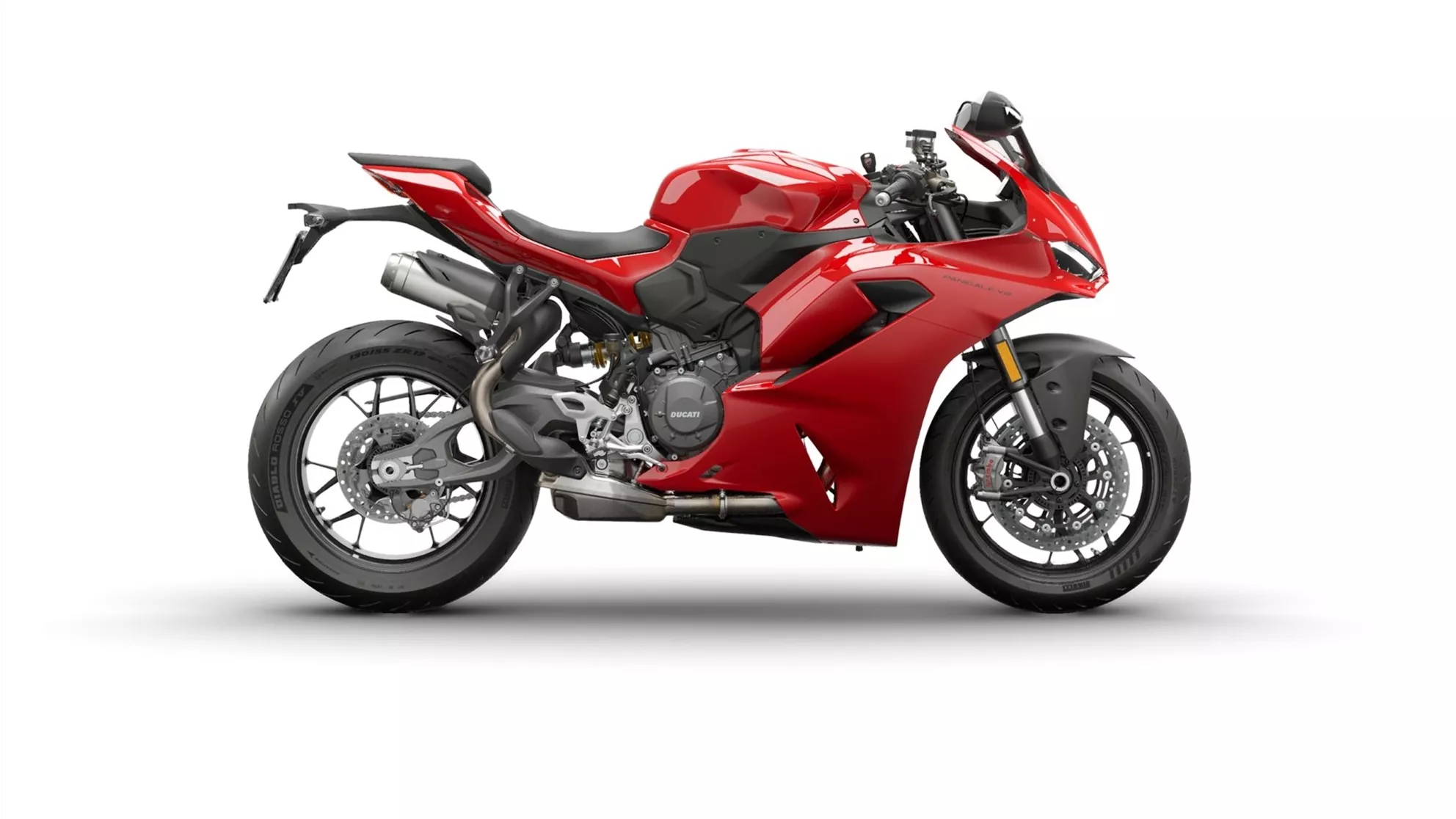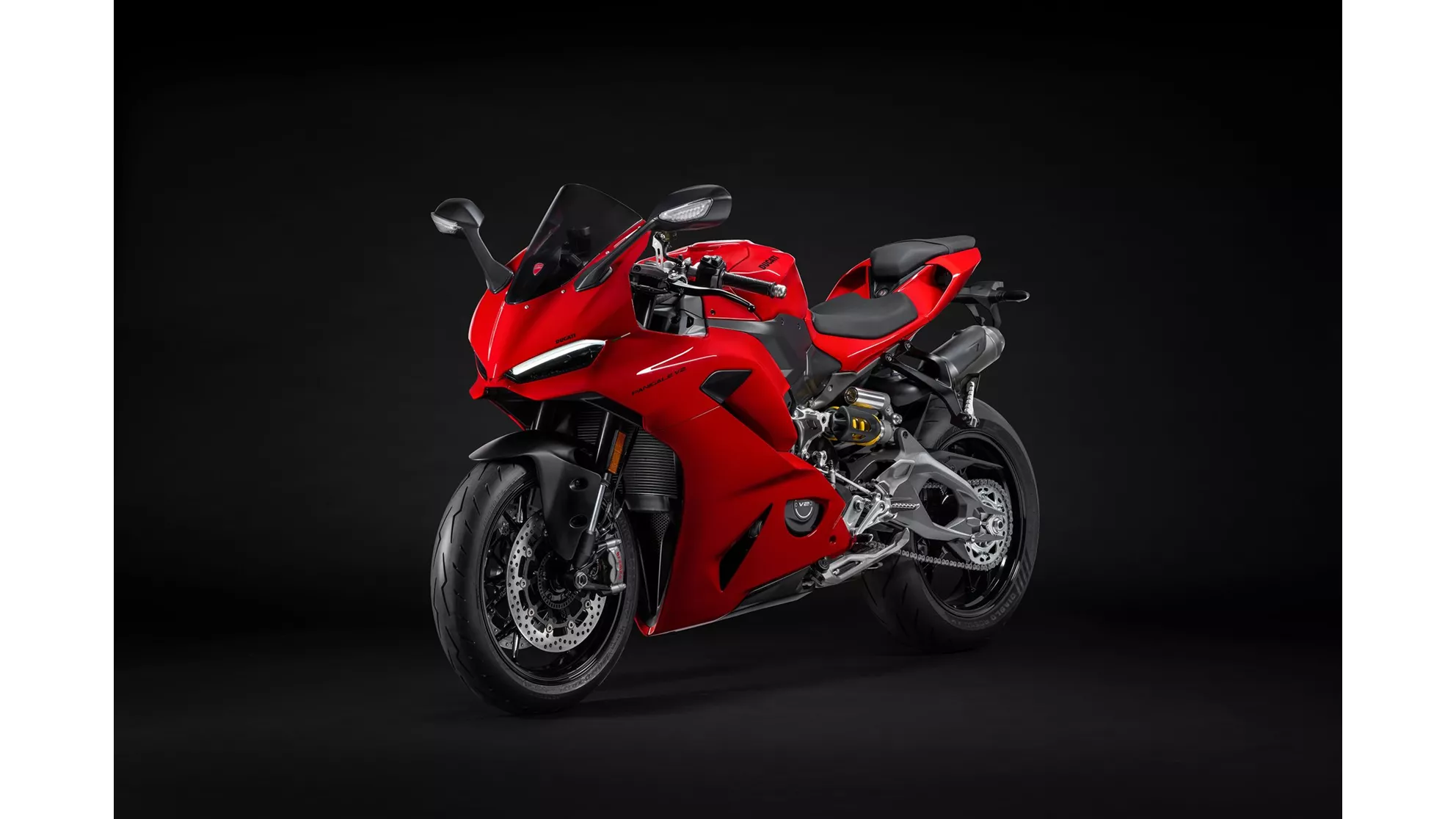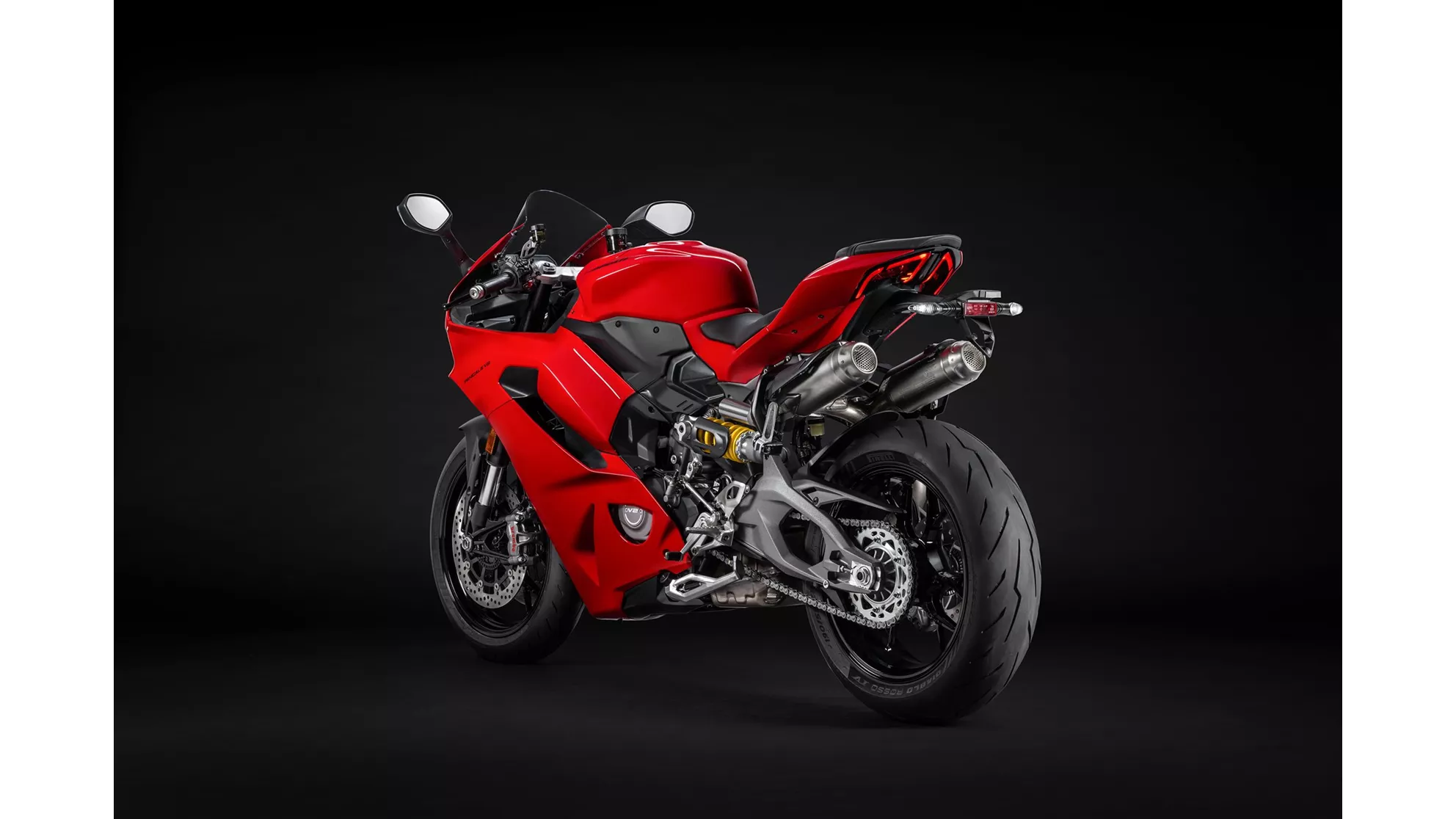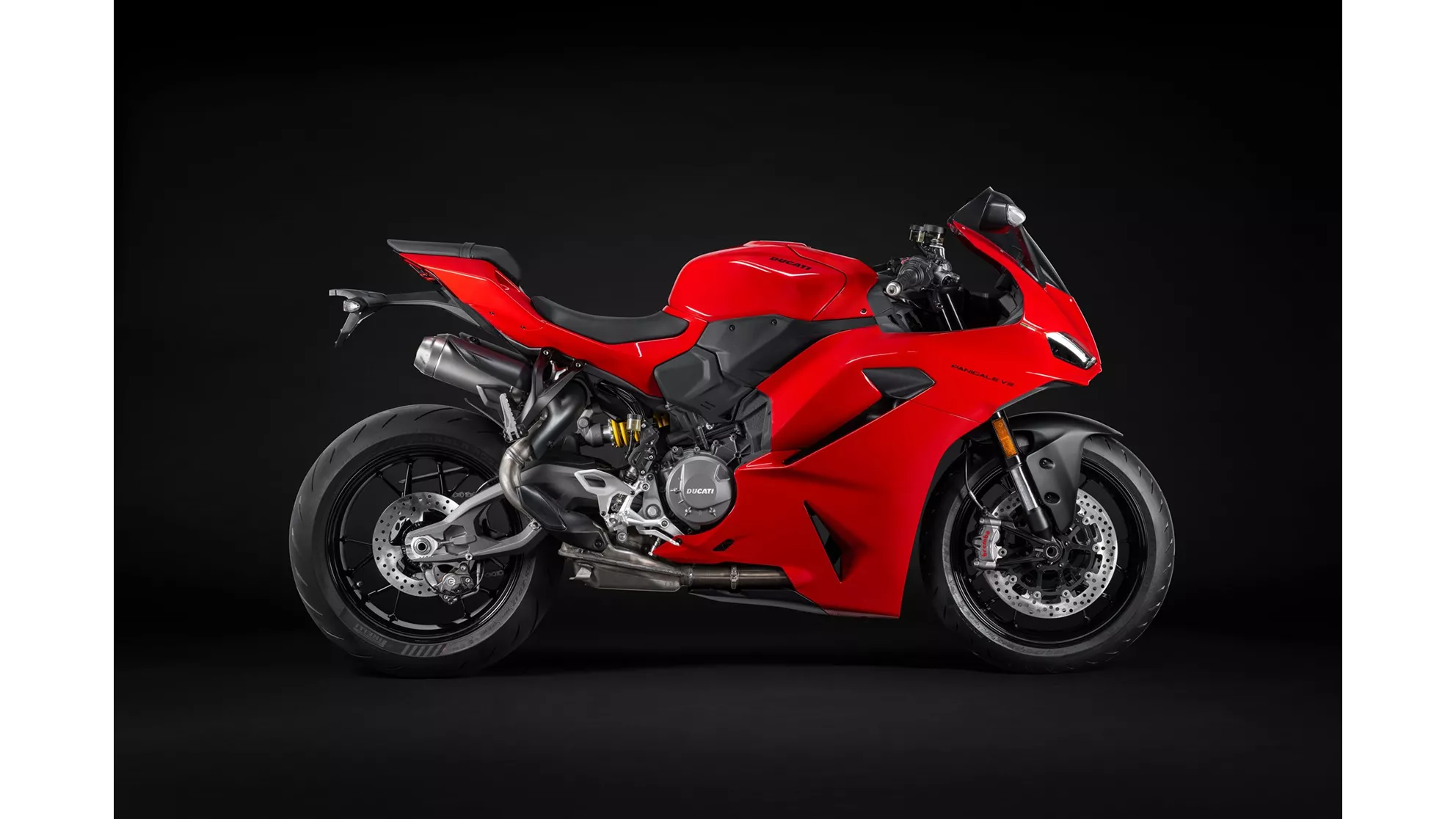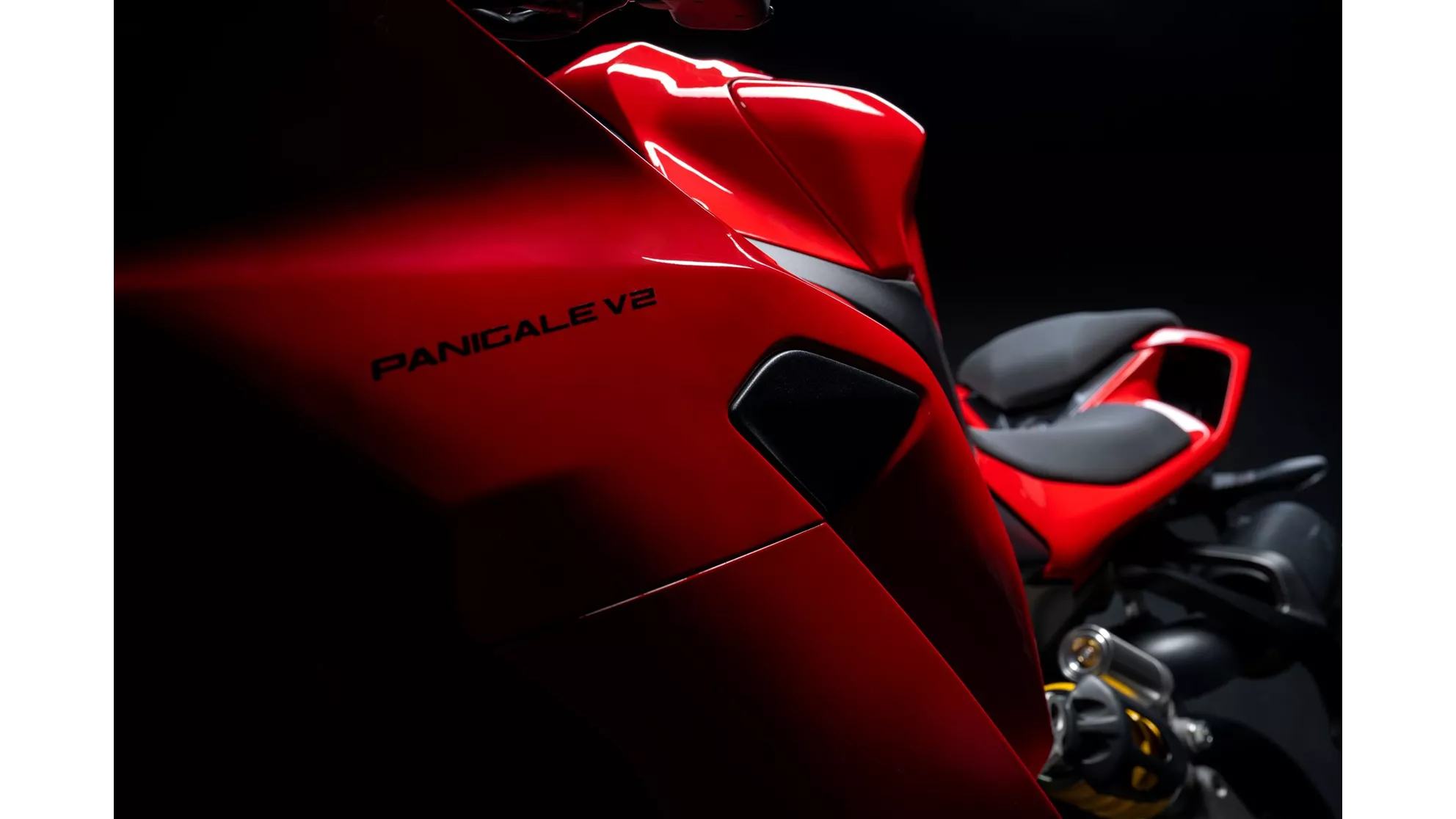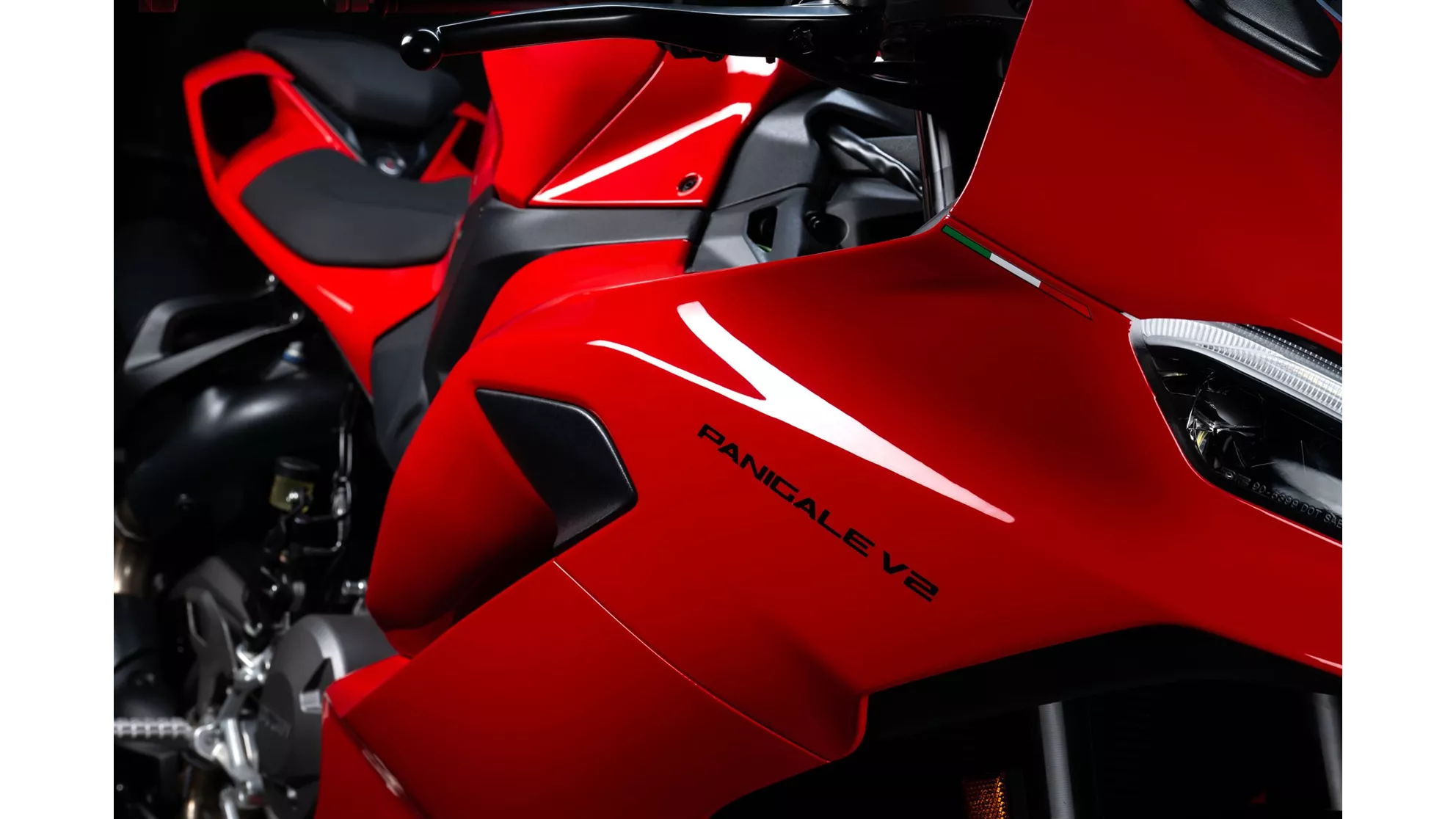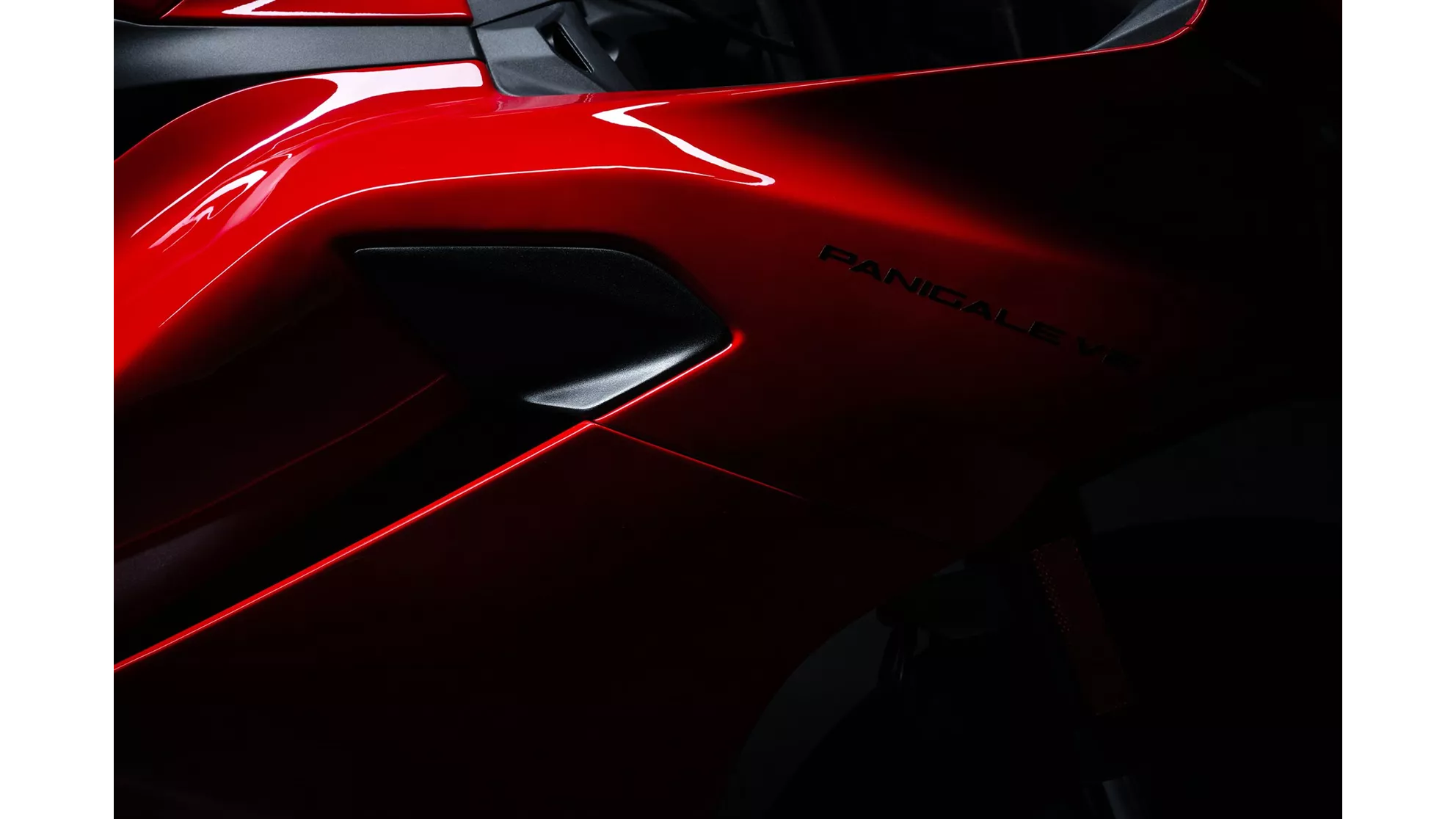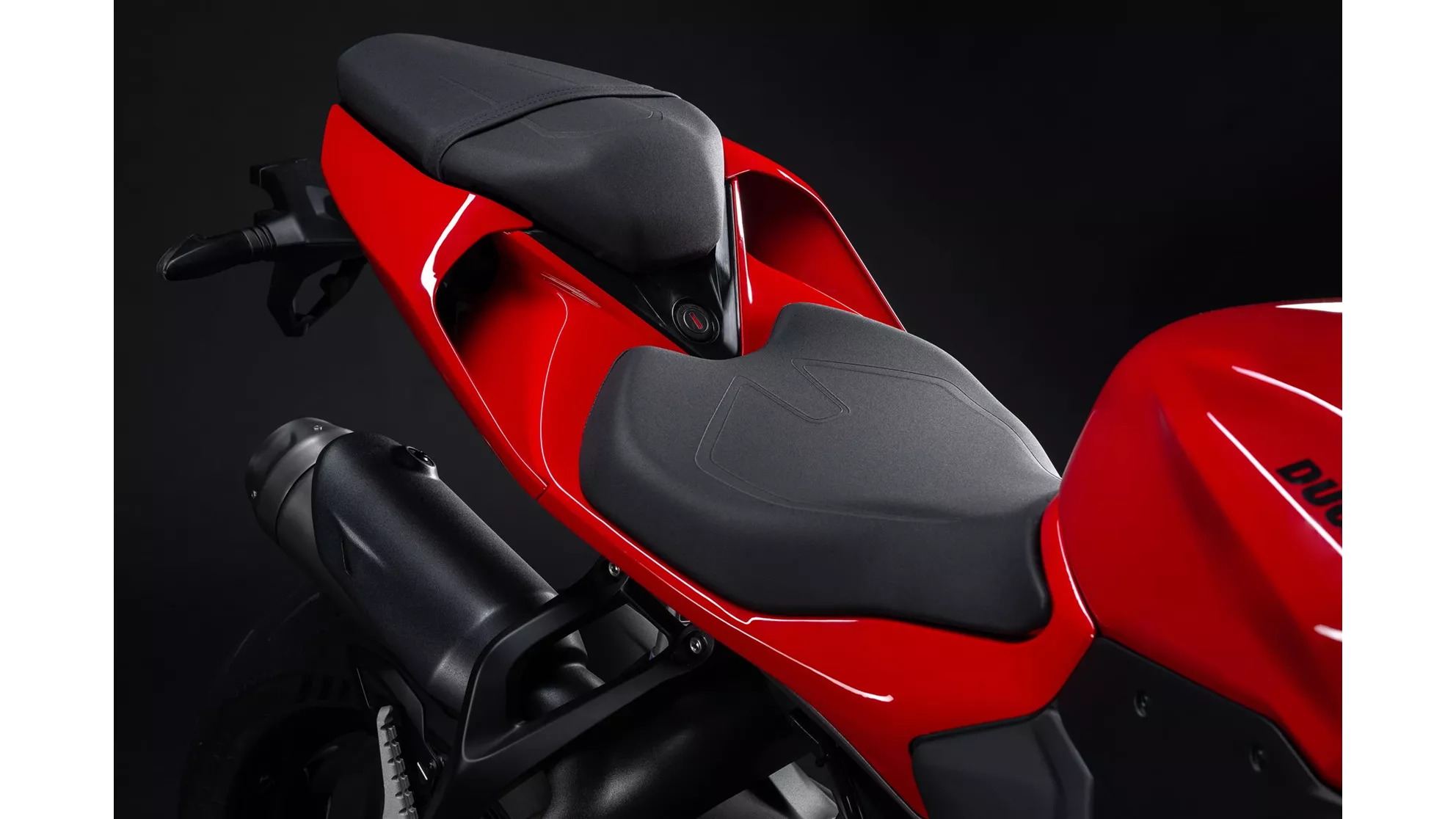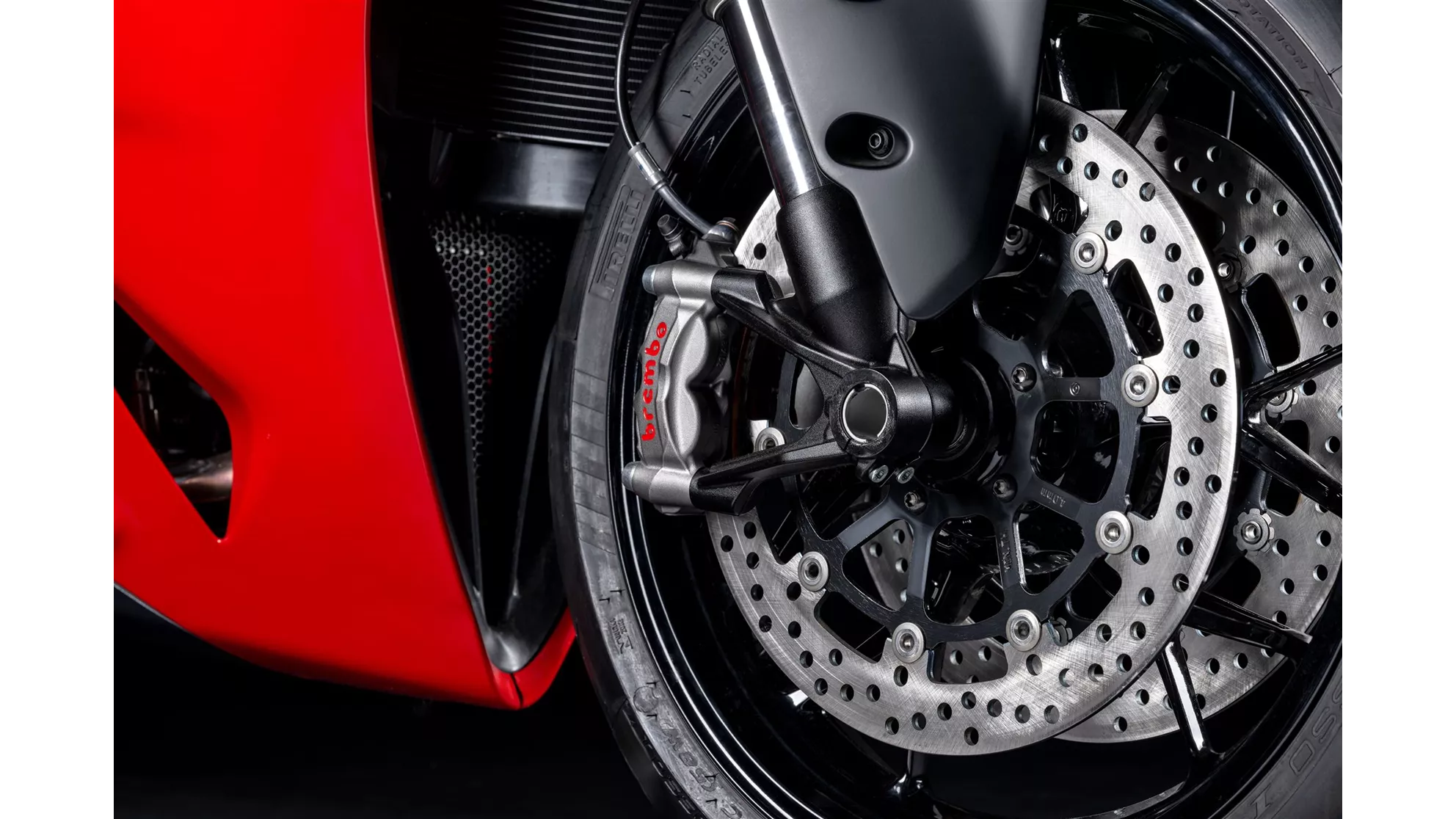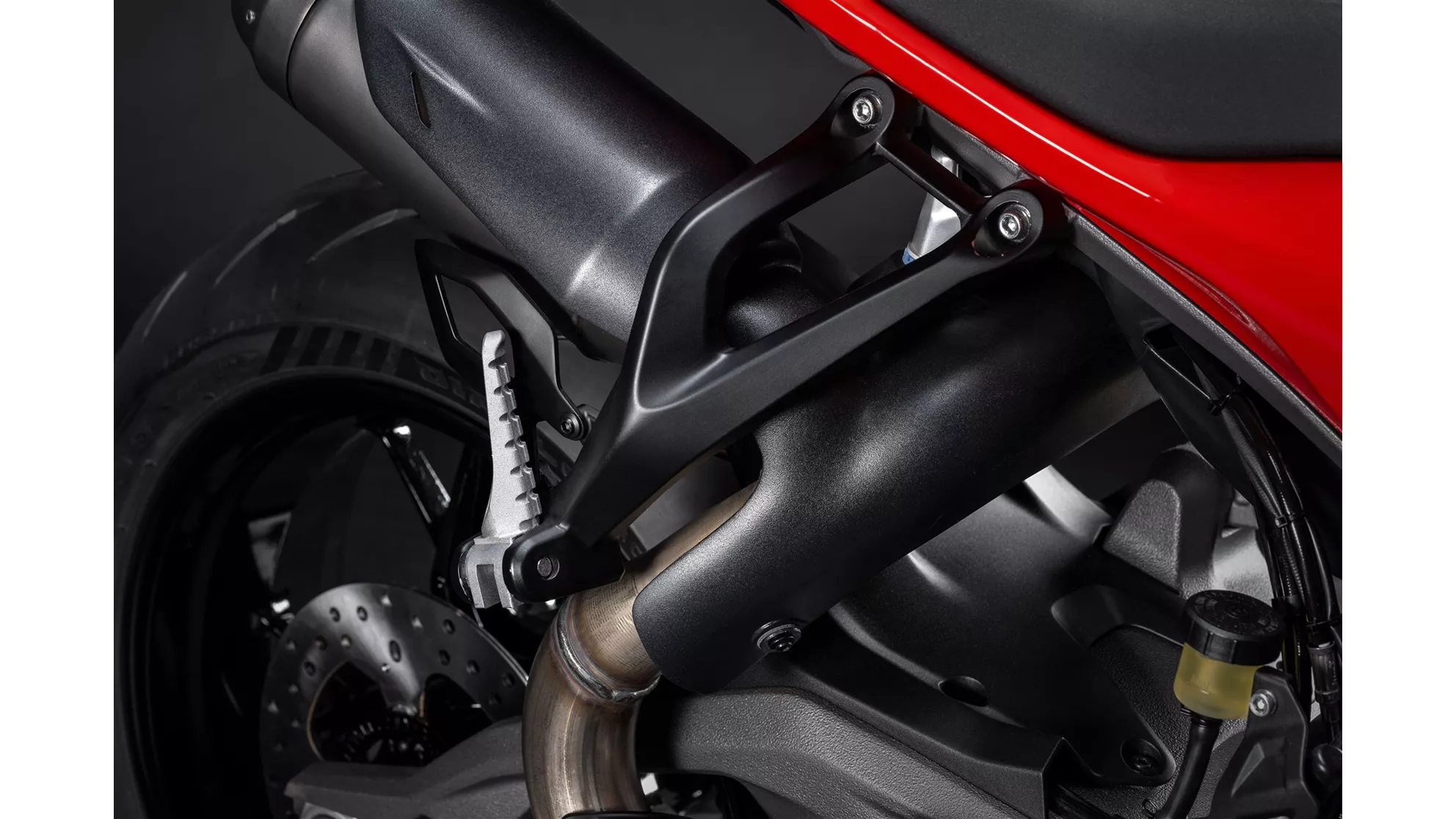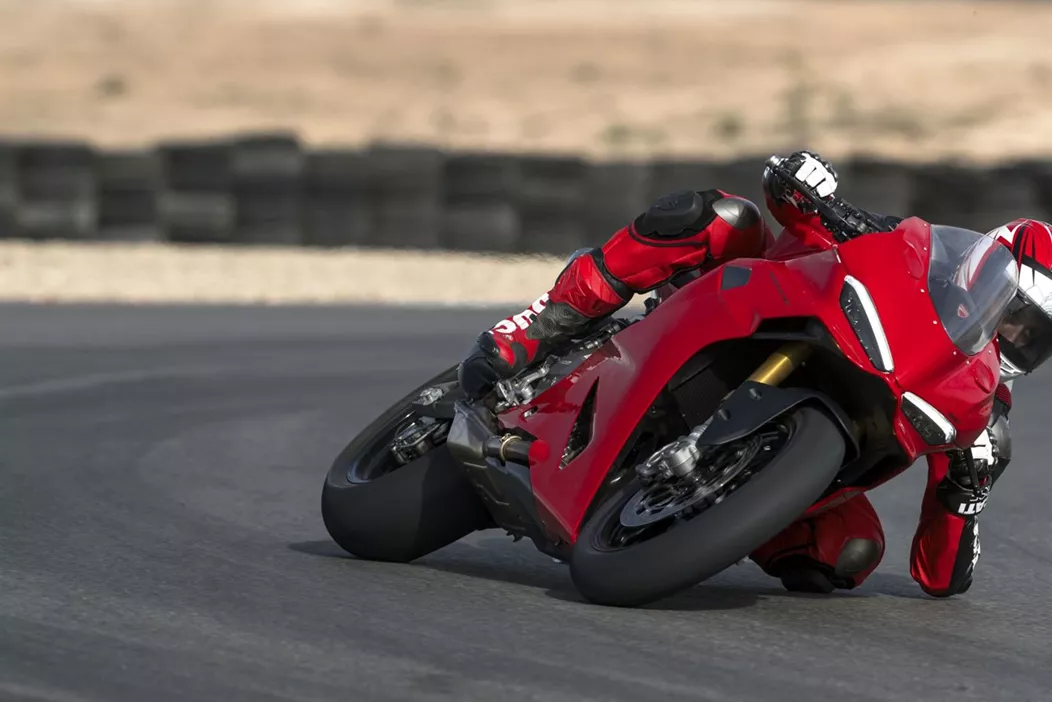Ducati's new 890cc V2 engine is breathing life into several Ducati 2025 motorcycle innovations. We got to test how well this new powerhouse performs in the Panigale V2 at the brand-new Circuito de Sevilla.
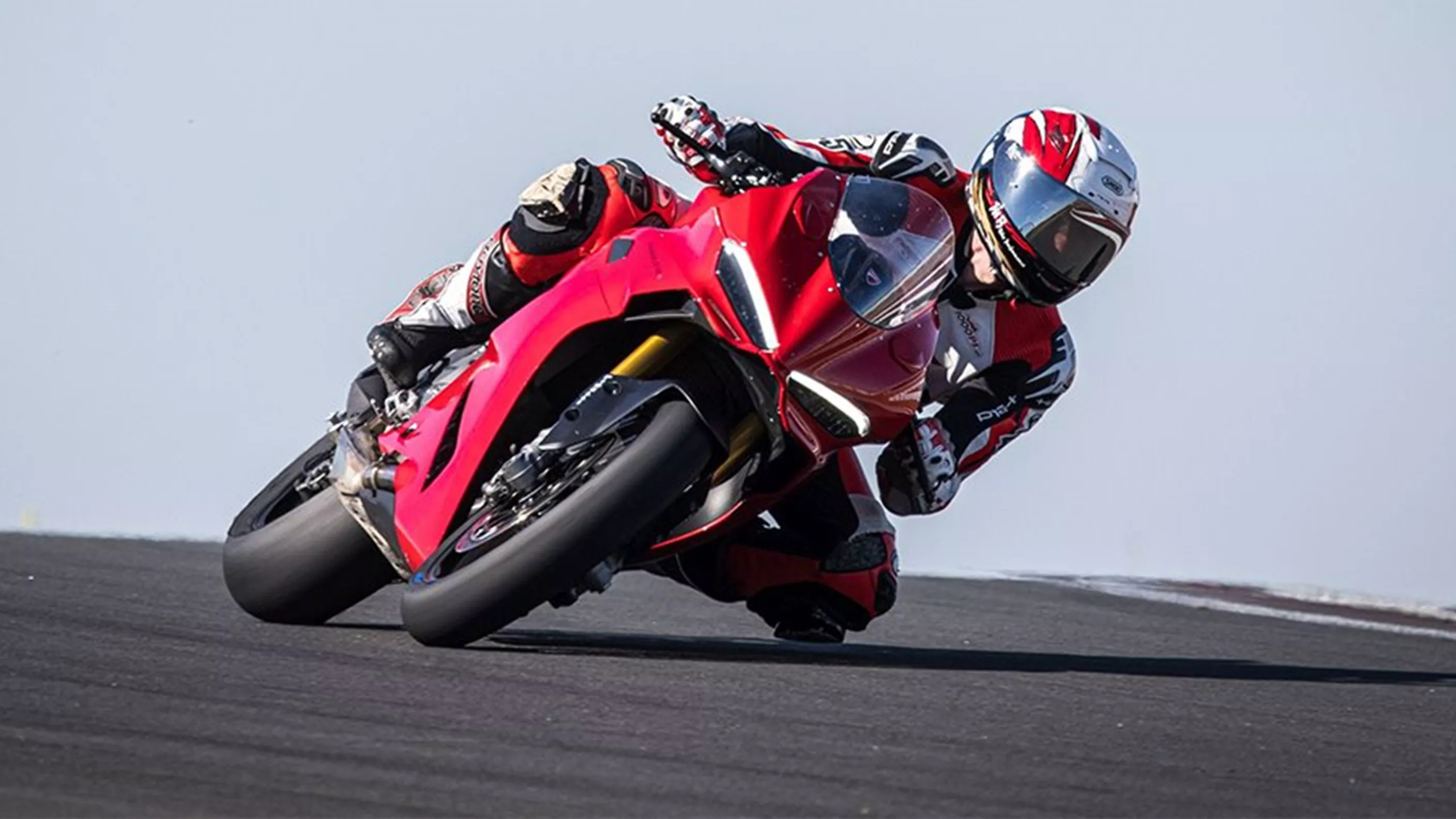
Ducati Panigale V2 2025 Track Test
Ducati Unveils New V2 Panigale with Downsized Engine!
You might have expected anything from Ducati, but a new V2 Panigale with a redesigned engine boasting less power wasn't one of them. Especially since its predecessor wasn't exactly a powerhouse compared to the in-house V4 version. Yet, the Italians have taken a completely different tack, opting for downsizing with this engine. With a smaller displacement and reduced power, it seems Ducati is aiming to make a mark in the lower segment while carrying the illustrious "Panigale" name. What can we expect?
&width=72&height=72&bgcolor=rgba_39_42_44_0&mode=crop)
Martin_Bauer
published on 17/02/2025
The New V2 Engine of the Panigale - Ducati Panigale V2 2025 Test
As mentioned earlier, the new V2 engine has been downsized in both displacement and power, boasting 890cc and 120 horsepower. The basic structure and 90° cylinder angle remain unchanged. However, Ducati managed to make the engine more compact and significantly lighter due to the reduced displacement. An impressive 9.4 kg has been shaved off compared to the 955 Superquadro. This weight loss was achieved through numerous small details, such as hollow and chromed valves. Additionally, the engine utilizes DLC coatings in the valvetrain, allowing for smaller component sizes due to increased wear resistance at contact points, further saving weight. Furthermore, the new engine forgoes Desmodromic valve actuation. Here, the valves are closed with springs, as is common in most other motorcycles. This eliminates the need for the elaborate valve adjustments typical of Desmo engines and extends valve clearance checks to a 30,000 km interval. A significant portion of the weight savings also comes from the smaller engine casing, complete with reduced cooling channels and a water/oil heat exchanger positioned between the cylinders, making an oil cooler unnecessary.
In addition to the weight advantage, Ducati employs variable valve timing, already known from competitors, to offset the displacement disadvantage in the lower rev range. This enhances performance at lower RPMs, ensuring a smoother power delivery, particularly beneficial in street riding. However, peak power only arrives at 10,750 RPM, and maximum torque of 93 Nm is achieved at 8,250 RPM, before the limiter kicks in at 11,350 RPM. With the optionally available optimized Termignoni exhaust system, the engine is expected to reach 126HP. Based on these figures, those seeking maximum thrust will still need to stay in the higher rev ranges.
Ducati also takes a unique approach with the stock exhaust system. While the outlet features two under-seat mufflers similar to the V4 racing system, the routing to the rear is somewhat unconventional. Typically, efforts are made to conceal the pipes elegantly within the bike, but in this case, they extend far back underneath and then rise prominently alongside the swingarm. This is a consequence of the new Euro 5+ emission standard requiring a large pre-silencer to meet stringent limits. As a result, there wasn't enough space to route the pipes within the swingarm. To ensure sufficient legroom from the hot exhaust pipes, the routing has been executed in an unusual manner. Whether this appeals visually is subjective. However, those seeking an alternative will find it with the Termignoni accessory system, which eliminates the pre-silencer entirely and routes the pipes aesthetically within the swingarm up to the mufflers. Incidentally, this modification drastically reduces the overall weight of the V2 Panigale to just 169kg!
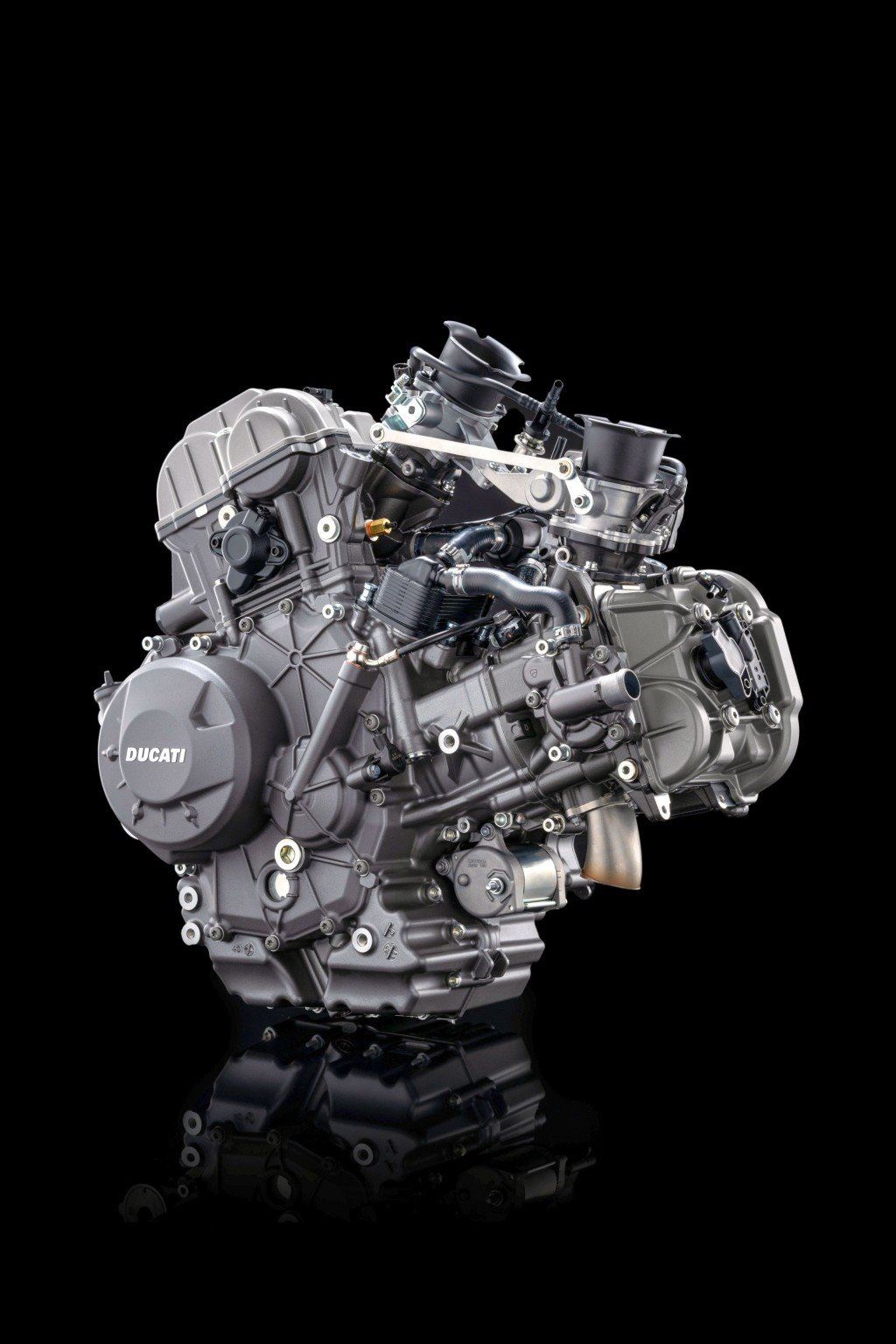
Ducati's new V2 engine with 890cc displacement, 120 HP, and 93 Nm of torque.
The anti-hopping clutch runs in oil, effectively eliminating the previously typical Ducati clutch rattle when idling, which would barely pass today's noise regulations. Naturally, the new engine complies with the latest Euro 5+ standard, making it suitable for future applications. Furthermore, the engine will be available with 115 HP and a larger flywheel mass to cater to increased comfort/touring demands, allowing it to be fitted to other types of motorcycles. Ducati also aims to improve its standing in the Supersport World Championship with this new engine. Due to the predecessor's large 955cc displacement, Ducati had to restrict the V2's throttle opening to a maximum of 70%. This meant carrying a relatively large engine that couldn't fully unleash its potential, a limitation now resolved with this step.
Testing the Chassis of the Ducati Panigale V2 2025
The monocoque frame of the Panigale V2 is cast from aluminum and weighs a mere 4 kg. It's directly attached to the cylinder head of the engine, enhancing the bike's structure while also reducing weight. Additionally, the frame doubles as an airbox, further contributing to weight savings. With a wheelbase of 1,465 mm, a steering geometry featuring a 23.6° rake, and 93 mm of trail, the Panigale V2 offers agile handling and should deliver quick, precise steering. These attributes are designed to ensure stability while cornering and at high speeds. The swingarm, similar to its big V4 sibling, features a dual-arm design.
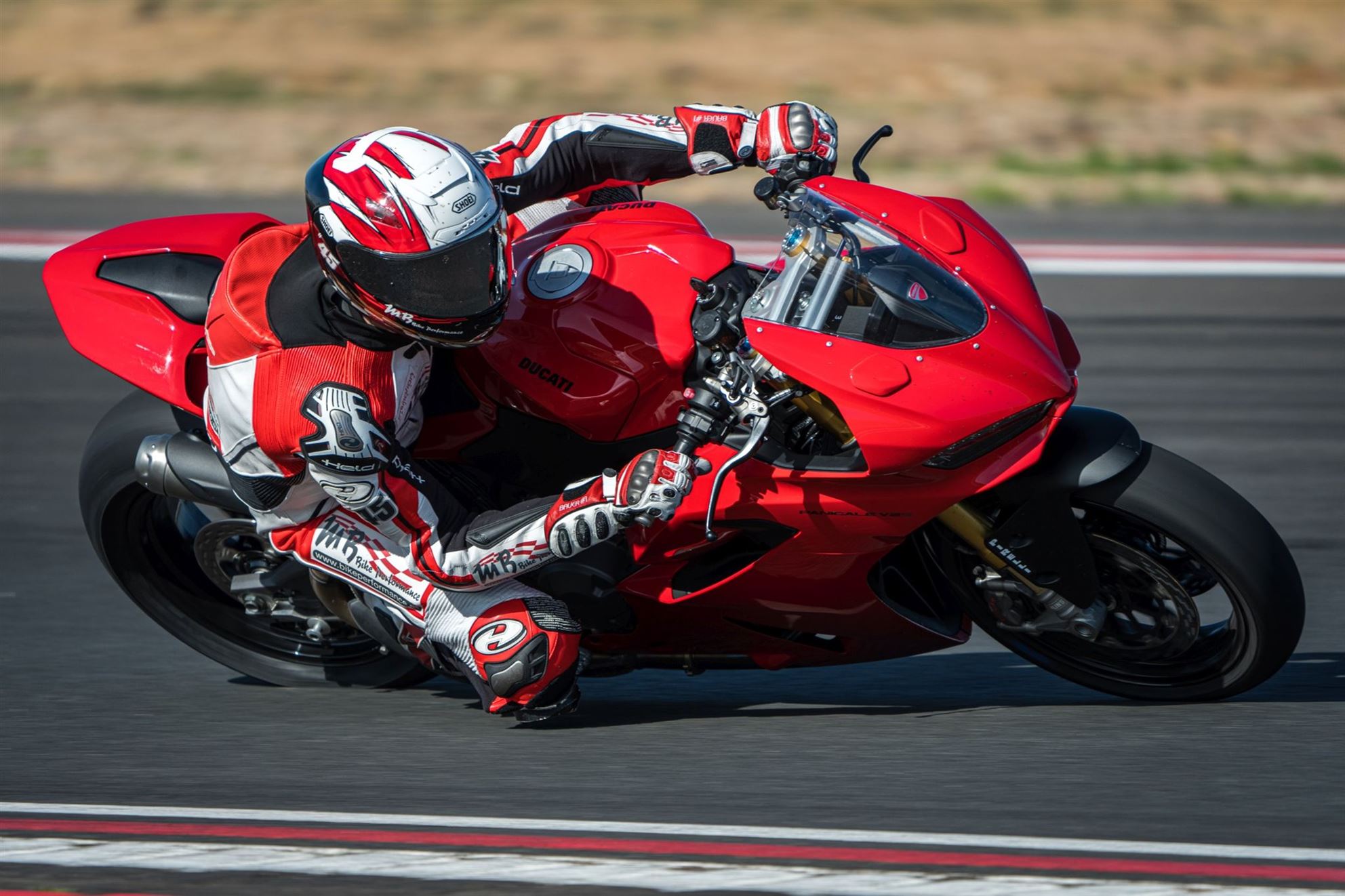
It might not look like it in this photo, but the new geometry of the Panigale V2 allows for a rather relaxed riding position.
A significant difference lies in the riding position. Compared to its predecessor, the higher clip-ons make it noticeably more comfortable, highlighting its suitability for longer rides. With a seat height of 837mm, average to tall riders should find it accommodating, though shorter riders might encounter some challenges. Overall, weight savings were achieved in these areas as well, and with a lightweight lithium battery in the "S" model, the bike's total weight has been impressively reduced by 17 kg compared to its predecessor, now weighing just 179 kg for the standard version and 176 kg for the "S" without fuel.
Ducati Panigale V2 2025 Brake & Suspension Test
True to Ducati's style, the brakes are once again Brembo. Featuring dual 320mm discs at the front clamped by M50 calipers, the new Panigale should decelerate effortlessly. The braking force is supplied by a radial master cylinder.
The standard version features a 43mm Marzocchi fork upfront and a Kayaba shock at the rear, while the "S" variant is fully fitted with Öhlins components. This time, electronic adjustability has been omitted to make concessions on pricing and weight. Nevertheless, all suspension setups offer a fully adjustable system.
Electronics and Riding Modes of the Ducati Panigale V2 2025
In addition to the 5" TFT display, the Panigale V2 features an advanced electronics package based on a 6-axis inertial platform. The features include:
- Sporty ABS Cornering: Provides added safety when braking in corners.
- Ducati Traction Control (DTC): Prevents rear wheel spin.
- Ducati Wheelie Control (DWC): Manages front wheel lift during acceleration.
- Engine Brake Control (EBC): Regulates engine braking.
- Ducati Quick Shift 2.0: Allows fast clutchless shifting in both directions.
The Panigale V2 offers four riding modes (Race, Sport, Road, Wet), allowing the rider to adjust the settings for all controls and engine response to suit their preferences and the current riding conditions.
Riding Impressions of the Ducati Panigale V2 2025
Certainly! Here is the improved translation:
Right from the get-go, the riding position feels unusually comfortable for a supersport, mainly due to the handlebar extensions that offer a more upright and relaxed riding posture. Even when cruising on the track, this is no disadvantage, as the front-end feel remains intact. In braking zones, it actually aids the rider in maintaining their position during hard braking maneuvers with minimal effort. Additionally, the extremely low weight significantly contributes to the bike's excellent deceleration capabilities. This advantage continues all the way to the apex, where incredibly tight lines can be taken even at high entry speeds. It's one of the most striking positives of the new V2 Panigale.
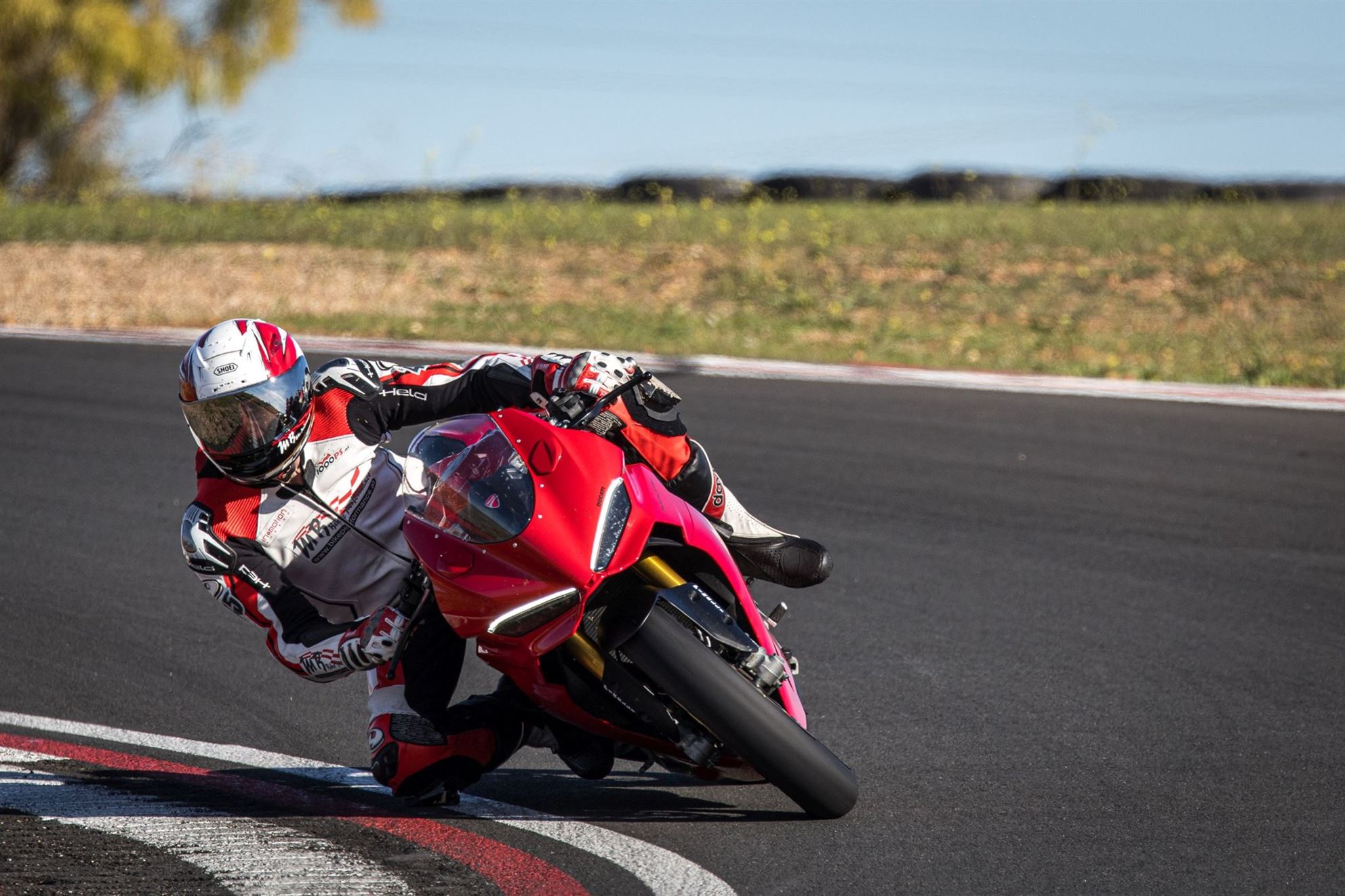
The reduced power of the new Panigale V2 is offset by its radical weight reduction. It only starts to run out of steam towards the end of the rev range.
Even though the engine is weaker on paper compared to its predecessor, it doesn't feel significantly less powerful thanks to the bike's low weight. With variable intake timing, it delivers power very smoothly from low RPMs. By 4,000 RPM, 80% of maximum torque is available, and it really kicks in at 6,000 RPM. Only near the limiter does the eagerness to rev slightly diminish, a concession to the Euro5+ stock exhaust system. Nonetheless, it's impressive as the noise emissions barely rise above a "hairdryer" volume as per the regulations. For those seeking a more robust sound and stronger high-rev performance, the full Termignoni system is a solid recommendation. It provides an extra 6 HP, more rev happiness, and the typical V2 rumble. Unfortunately, this setup is not street-legal. The unusually low engine braking for a V2 takes some getting used to. Even at maximum engine brake setting, the bike decelerates very little via engine braking alone. However, given the Panigale's slim design and light weight, which allow for high cornering speeds, this isn't necessarily a disadvantage. Once accustomed, it's easy to convert the higher entry speed into tight lines and exit the corner smoothly. Otherwise, the engine is solid, with minimal vibrations and smooth throttle response. Thanks to ride-by-wire, even less experienced riders can comfortably select the most aggressive throttle setting.
Innovative Quickshifter Not Fully Mature - Ducati Panigale V2 2025 Test
Certainly! Here is the improved translation:
The quickshifter relies on the new V2.0 system. Instead of a shift sensor in the linkage, it uses a position sensor in the gearbox. This detects any position change in the shift shaft when the shift lever is engaged and triggers the necessary adjustments for the shift process. One advantage is that no force sensor or associated "loose" cables need to be routed to the moving shift rod. However, this system doesn't allow for the definition of release force—which refers to the pressure needed to initiate a shift—or the creation of preload on the shift shaft, which involves lightly engaging the gear before the shift to ensure smoother transitions. This is evident in the new V2 Panigale. While the quickshifter functions unobtrusively in most cases, it occasionally acts up, particularly during shifts in the mid-range gears and at high revs. There might be room for improvement with different interruption algorithms.
The Öhlins suspension on the "S" performs exceptionally well even under high stress on the track, enabling fast lap times without major adjustments. Still, it can be tailored to different requirements thanks to its excellent adjustability. It's hardly a drawback that the rear features just an Öhlins standard shock and not a TTX damper. Unfortunately, we weren't able to test the Marzocchi/Kayaba suspension of the standard version.
Lap Timer and Steering Damper of the Ducati Panigale V2 2025
The GPS module for the integrated lap timer has proven to be a very useful accessory. It's mounted at the rear and provides an automatic trigger for timing on all race tracks. It only needs to be programmed once per track but can record multiple split times. During testing, it functioned flawlessly. For those who prefer additional stability, there's an Öhlins steering damper kit available for the Panigale, as it's not included in the standard equipment. However, since the Panigale runs quite smoothly, it's not necessarily required.
Ducati Panigale V2 2025 Price & Availability
The Ducati Panigale V2 is now available at dealerships, initially in the classic Ducati red paint scheme. The V2 is offered in a two-seater configuration, while the V2 S comes in a single-seat setup, with a passenger kit available as an accessory if needed. In addition to the Öhlins suspension, the "S" also features a lightweight lithium battery, contributing to the 3 kg weight difference.
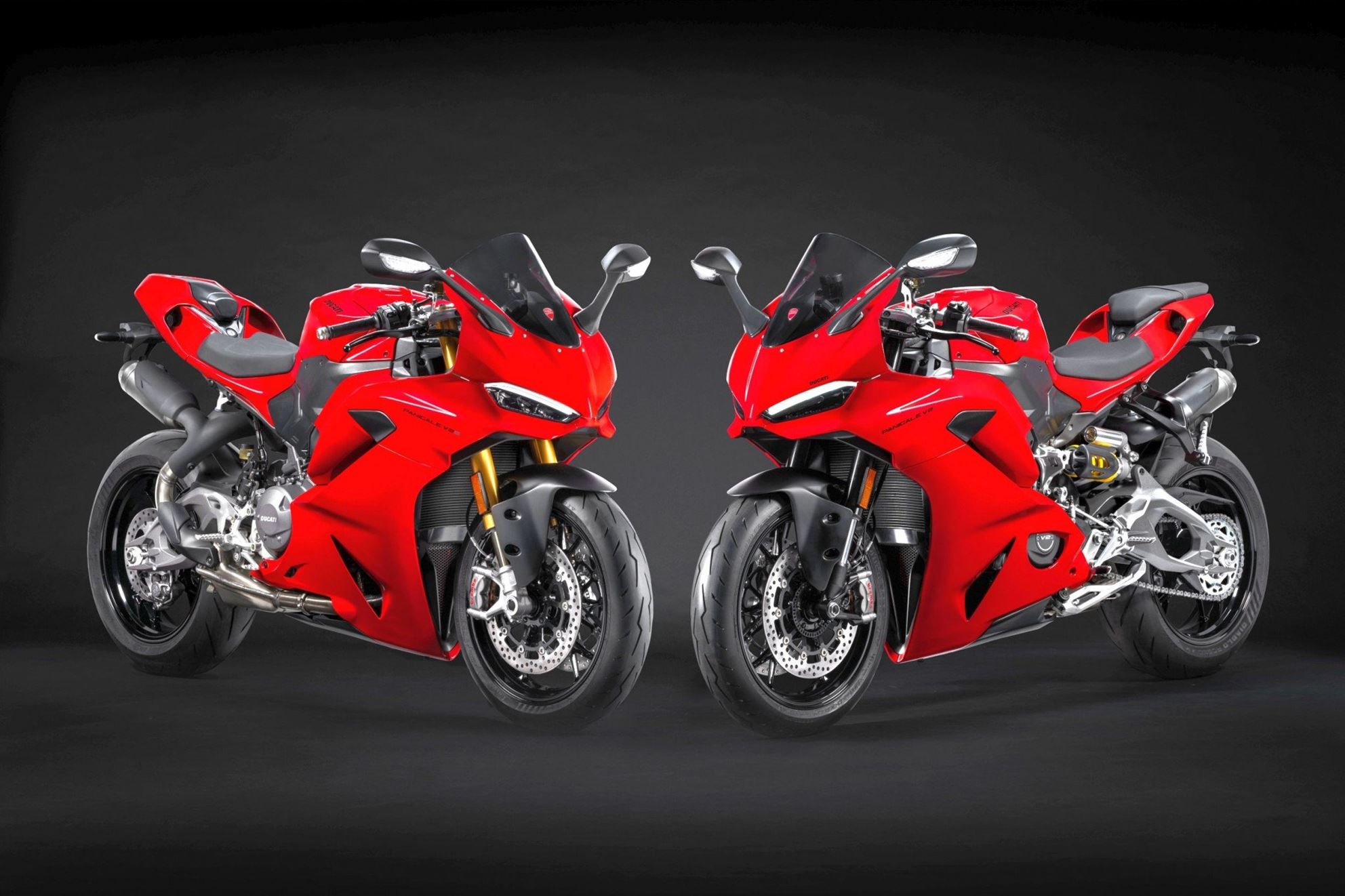
Ducati Panigale V2 & V2 S 2025
There has also been a noticeable shift downward in pricing. While the V2 is available in Germany for €16,390 and the V2S for €18,890, in Austria, they are priced at €19,795 and €22,495 respectively, including all taxes and fees. The previously mentioned complete Termignoni system is offered at around €2,500.
- How much does a Ducati Panigale V2 cost?
- Here you will find an overview of the price level of new and used motorbikes!
&width=60&height=60&bgcolor=rgba_39_42_44_0&mode=crop)
Ducati Panigale V2 2025 - Experiences and Expert Review
Martin_Bauer
Ducati has fully achieved its goal of creating an easy-to-ride supersport bike. With its extremely light handling, low weight, and easily controllable engine, the new V2 Panigale is a joy on technically demanding tracks. The major highlights are its late braking points and tight cornering radius, which can be maintained even at high cornering speeds. The slightly lower power is almost compensated by the weight. This makes the new V2 Panigale a significant improvement for beginners compared to its predecessor, proving that "power isn't everything" as its lightness helps novices achieve better lap times. Even for me, a power-hungry superbiker, the little Panigale brings a smile to my face. Ducati has scored many points for road use with this model. The Italians have introduced a toned-down version with a much more comfortable seating position, aimed clearly at road usability and beginner-friendliness. This is further emphasized by the availability of an A2 version. Coupled with reduced prices, the V2 Panigale becomes an option for the budget-conscious. An entry-level Panigale, who would have thought?
More from 1000PS Magazine
Ducati Panigale V2 2025 Track Test Images
Source: 1000PS










































